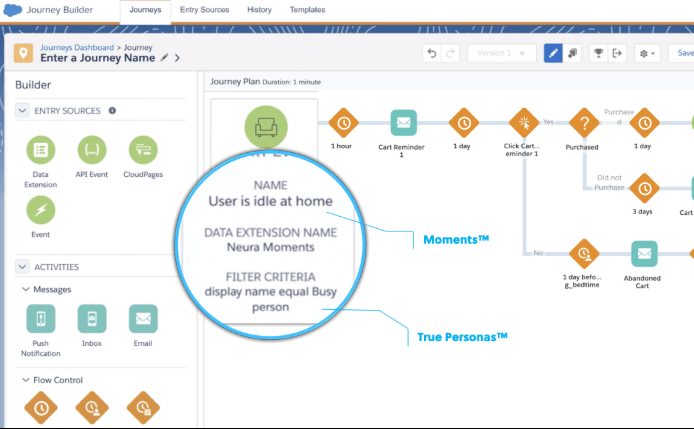Location data has come a long way. From the early days of radius targeting, which is still happening, mobile-location and location history are now being used for sophisticated AI-driven personalization and customer engagement, increasingly without any reference to location at all.
Neura, which describes itself as “a leader in real-world customer intelligence,” announced it’s available as an app for Salesforce Marketing Cloud. I spoke with Amit Hammer, CEO of Neura, about the practical mechanics of what the company announced.
Converting location into consumer attention. Neura promises brand marketers that they will be able to use its Salesforce app to create customized audience segments and then market to them when they’re most receptive (via app notification, email or text) based on real-world activities and movement patterns. Neura’s data can also be combined with other insights in Salesforce to launch fully automated, personalized campaigns from within Marketing Cloud.
This sounds like the familiar “right message, right time, right place” refrain that has annoyingly appeared in so many mobile marketing presentations. But Hammer convincingly unpacked it for me.
Customer-journey builder incorporating behavioral “triggers” for personalized messaging

Hammer argued that app engagement is generally poor – Neura says notifications have average engagement rates below 8% – because messages are delivered at the wrong time, when users’ attention is not available (e.g., at work, sleeping, working out). He says that behavioral insights from offline movement patterns (and related customer inferences) are a much more reliable guide to customer openness to marketing messages.
This is the alchemical transformation of location data into attention-availability (i.e., time).
Agencies or in-house marketers handle all the creative. Neura’s system identifies when each person in each audience segment may be most open to the marketing message. Two “business travelers,” for example, may still have very different work-leisure schedules and corresponding attention patterns. Neura’s system can accommodate those differences. Users may receive the same messaging creative but potentially at very different times of day or days of the week.
SDK integration into enterprise mobile app. Neura works predominantly with mobile-first brands that have app-based audiences. If users don’t have the brand’s app it’s much tougher to gain these insights and the system doesn’t work as well — although there can be some lookalike modeling.
Neura’s enterprise/brand customers install the company’s SDK in their app. Then Neura starts building behavioral profiles of the brand’s audience from scratch.
Privacy is much less of an issue (or perhaps not an issue) here because this is permission-based first-party data. Neura is analyzing data on behalf of the brand, which has a direct relationship with its consumers. In addition, users must affirmatively opt-in to allow use of location.
The system doesn’t rely on pre-defined personas (e.g., working parent, business traveler) and then seek to find those people in the world, but creates customer personas and profiles based on their individual behaviors. As indicated, there is some lookalike modeling but Neura is more often delivering deterministic data.
Why marketers should care. Location is a critical source of data signals about customers. In many cases, offline activities are much more reliable indicators or predictors of preferences, identity, and intent than online signals. However, all of this must be handled transparently.
But when location is ethically and reliably sourced, it can be the cornerstone of relevance and personalized marketing efforts. And the combination of this data with machine learning technology does bring us much closer to – dare I say it – one-to-one marketing.

